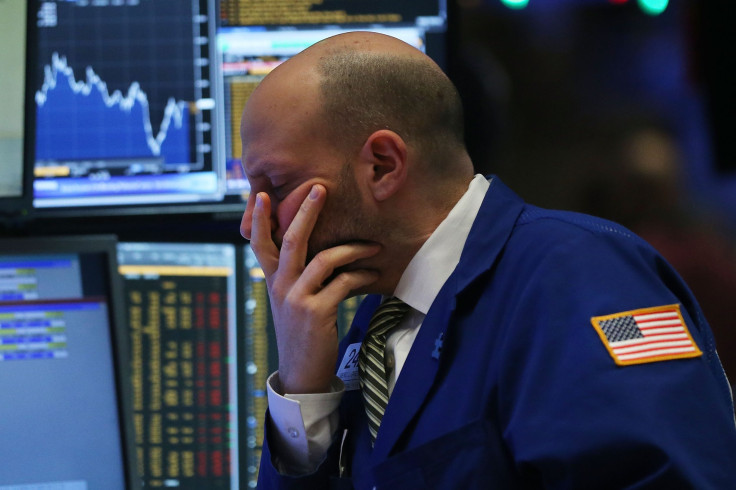Stock Plunge: Global Market Rout Shows Mounting Risks To World Economy

Stock markets predict more recessions than have ever occurred, but that doesn’t mean their signals are useless. And right now the global rout in equities is flashing warning signs that most economists refuse to dismiss outright.
The bearish case stems from developments in Beijing, where investors are not at all certain the government has the political will to tackle the country’s rebalancing away from exports toward domestic consumption. Absent greater demand from China, the world will look elsewhere and find Europe still clawing its way out of crisis — not shrinking but not accelerating either. And in the United States, growth is bound to slow under pressure from a weaker dollar and higher interest rates.
“I think there’s a real risk of a new global downturn,” said Simon Tilford, deputy director of the Center for European Reform in London. “What we are facing in China is not a moderation. It’s a huge adjustment. And that will have knock-on effects.”
U.S. stock prices fell steeply Friday. At one point the Dow Jones industrial average dropped more than 500 points, as oil prices plunged. The sell-off follows other sharp declines on Wall Street in recent weeks, with investors spooked by fears of a slowdown in China's growth rate and as economists slashed fourth-quarter U.S. growth estimates.
BlackRock Chief Executive Officer Larry Fink said Friday the stock market could fall another 10 percent, and oil prices could test $25 per barrel. “We're in the midst of a real market decline, bordering on a bear market,” he told CNBC. Stock markets are considered to have entered a bear market when their prices have fallen 20 percent and are considered to be in a correction mode if their prices have fallen 10 percent. In late afternoon trading, the broad-based S&P 500 stock index was 1,877.51, down about 11 percent from its Nov. 3, 2015, high of 2,109.79.
Still, there’s at least some room for optimism when comparing the current circumstances to previous crises, like the one in Asia in the 1990s. Central bank reserves are high, giving them leeway to prevent sudden shocks, and exchange rates are more flexible, which helps minimize pressure from speculative investors.
The weak link may be that neither the United States nor any other major economic power has potential to gin up demand in the global economy that would offset lower expectations elsewhere, such as from China, but even that’s debatable.
“Globally, there is no demand management — no one has that stabilizing role,” said Simon Johnson, a professor at the Massachusetts Institute of Technology and former chief economist at the International Monetary Fund. “But it’s also not clear what you would want, or whether you’d want it. China needs to rebalance. With that comes slower economic growth.”
Still, even the fairly optimistic Johnson admits: “It’s going to be a big stress test. We will find out who can handle it.”
The United States is at least a backstop against global recession, even if it can’t be a locomotive of growth worldwide, said David Rosenberg, chief economist and strategist at Gluskin Sheff + Associates Inc.
“There is not going to be a recession in the U.S.,” the Canadian asset manager wrote Friday in a widely circulated note.
The more bullish case for stock markets is that investors lower their gaze fairly quickly to what they can reasonably anticipate: slower — but still meaningful — growth in China, and higher interest rates from the Federal Reserve, but not unduly higher rates.
“While the lack of momentum in the world economy is likely to persist in 2016, market sentiment is poised to improve as markets readjust expectations,” wrote Marios Maratheftis, chief economist at Standard Chartered.
What is unquestionable is that financial markets could catch a serious cold this year, even if the global economy as a whole is hardly enough to dodge a serious ailment as a result of plunging share prices.
There are risks wired into all sorts of higher-yielding financial assets that weren’t there a few years ago. Emerging market corporate debt, some of it denominated in currencies that companies don’t have on hand, is high, and a lot of it is bad. Investors in Europe and the United States have put money into them. Ratings agencies, leery of being as behind the curve as they were in the 2008 financial crisis, are moving more quickly to downgrade debt that looks shaky, giving investors concrete reasons to sell.
That means contagion, the unnerving ability of sharp movements in one market to trigger global sell-offs with no clear end, is a new normal for the world this year.
“A contagion is possible at any time. Whether we are heading for a contagion in 2016 is unknown,” said David Kotok, chief economist at Cumberland Advisors. “It will not be known until it is visible. If it happens, it is likely to develop without warning.”
© Copyright IBTimes 2024. All rights reserved.





















